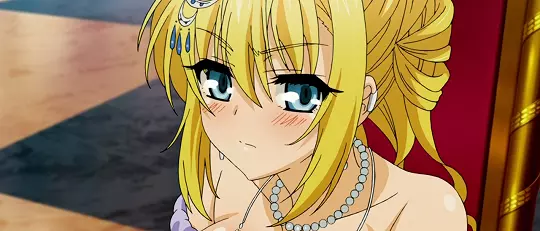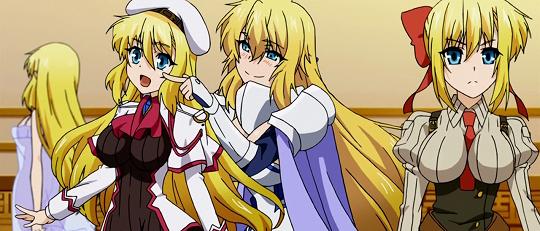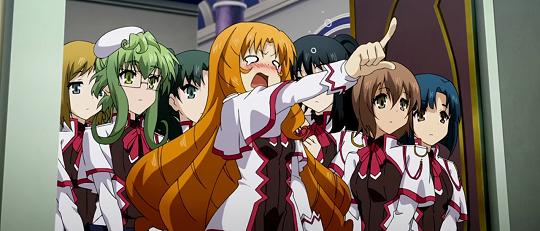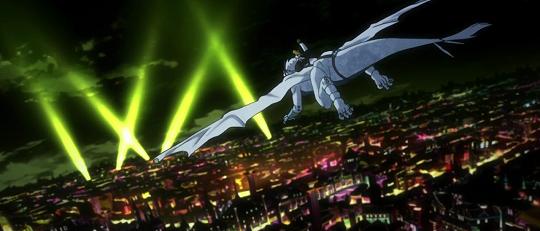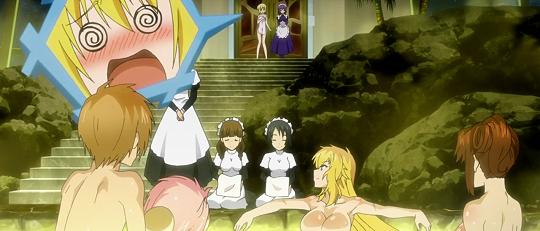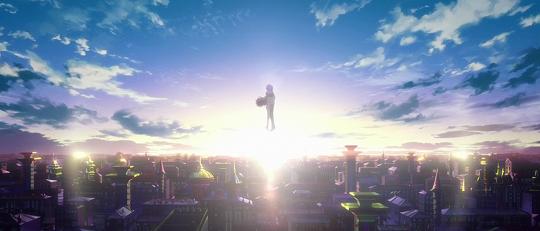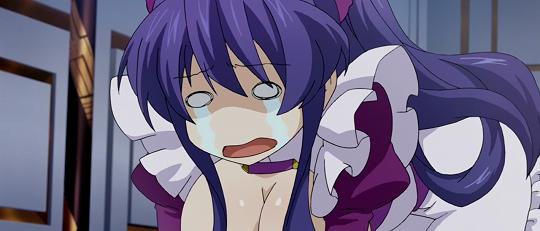There’s a principle in writing drama coined by Anton Chekhov called simply “Chekhov’s Gun”. It’s a straightforward idea with the spirit of it being “don’t include anything unnecessary”; a lot of anime do it anyway as either a hangover from their manga or light novel source material, as a way to entice viewers further than the first episode, or as a misguided attempt to construct a foundation for additional instalments. If that’s Chekhov’s gun, then Seikoku no Dragonar (Dragonar Academy) is Chekhov’s arsenal. It’s frankly staggering how such a multitude of bits of back story and character development are shown but then never utilised again.
Daughter of Avalon? Nope. Silvia and Ash’s history together? Nope. Arranged marriage? Nope. Morally ambiguous teacher? Nope. The list goes on and on until by the end you could make a doily out of all of the plot threads that are left hanging. What you do get in Dragonar then is a whole lot of things you’ve seen before but forced together like ill fitting jigsaw pieces. You’ve got the precocious and pink-haired loli from Zero no Tsukaima, the improbable harem of Infinite Stratos and the throw-away fantasy leanings of too many series to name.
The prelude to the mediocre opening track describes Lautreamont as a kind of dragon paradise where young people marked by magical brands get to ride their own dragon (“Pal” in the series parlance) and do… something when they, presumably, no longer endanger innocent bystanders with their giant lizards. The country’s deep ties to dragons however is never borne out, with the society and culture lacking the kind of integration that even something like Pokemon manages better. Effectively this is a high-fantasy medieval society with ill-explained “magic” and children riding dragons as the only defining elements.
Ash, do-gooder and bland male lead, has an overly large magical brand (or wicked tattoo which would go some way to explaining why he feels the compulsion to keep it wrapped in a bandage for no apparent reason) and finds himself a dragon, Eco, who happens to look like a twelve year old girl. Being the only dragon in the world who looks human you would expect a degree of consternation from Ash’s schoolmates. Nope. “Oh she’s a dragon? Well guess she better get dressed and come to class then.” For even more inexplicable reasons Eco is bereft of the usual features found on a human body (nipples, genetalia etc.) which for all intents and purposes makes her an obnoxious Barbie doll, yet she is still capable of normal human bodily functions.
At first it would be easy to write this off as a new, bizarre kind of advertisement for the inevitable home video release - it’s certainly less distracting than improbably bright and geometric light sources obscuring key areas - and for a while the series seems rather bashful about female anatomy. Up to a point, then like its protagonist, it tosses caution to the wind and has as many ladies, buxom or no, disrobed as possible. It’s about the same point that tentacle molestation by the enemy becomes a common occurrence because if there’s one thing we all know it’s that evil dragons have tentacles…
It was always on the cards of course: within minutes of the opening episode there is a barely dressed lady fellating Ash in all but explicitness so it’s no surprise when the naughty prehensile tentacles are unleashed nor is it when every female, some quite literally, throw their pants at Ash. It’s blatant and plays precisely to the mythical yet no less lucrative “hormone fuelled men” demographic but becomes slightly uncomfortable when the pint-sized human-form dragon is, sometimes unwittingly, getting inebriated and pawing the closest male to her; calling the substance that does this “anthar” rather than “alcohol” doesn’t make the situation any less seedy. Other times it’s just disappointing to see character progression - for the sparky assassin Anya for instance - squandered. Plaintive looks at dresses she can’t afford or at the happy people around her are entirely ignored for a final episode, final scene reveal that is so unnecessary and absurd - they met earlier in the series in broad daylight after all - that it just adds insult to injury.
Expecting anything more of a series that is skewed the way it is though is a lost cause. This is about pneumatic ladies and as tenuous a plot as possible in order to have them fawn over the punching-bag of a male lead. So it doesn’t really matter that although Ash can supposedly ride any dragon, by the end of the series other kids are riding them sometimes three or four to a saddle with cheerful abandon. And it doesn’t matter that there is never any real peril, just mild inconveniences for the protagonist to go on a power fantasy with while donning silly looking armour; even the big bad of the series switches sides without anyone batting an eyelid. “I’m good now, honest!” “Really?” “Yes!” “Oh that’s alright then. On you go.” It probably didn’t hurt that his evil schemes were so laughably ineffective that all they achieved were minor property damage.
No, Seikoku no Dragonar is that all too common mix of lewd, indifferent and inconsistent; it has limited budget and isn’t afraid to sacrifice imagination to use it on shiny breasts. There is an almost admirable straightforwardness about it but even that isn’t enough to ameliorate the unrelenting annihilation of brain cells you’ll feel with each episode. Predictable and uninspiring, I questioned why I continued to watch it in the face of such overwhelming reasons not to many times, and the best answer I could come up with was that it is lamentably easy to watch. Easy to defame but just as easy to continue watching; it’s the same argument I made for watching Infinite Stratos 2 so if you liked or at least tolerated Infinite Stratos, you might just like it with added dragon flavour.
